#bleach hanakotoba
Explore tagged Tumblr posts
Text
Bleach Hanakotoba Analysis Part 1 ~ OP16: Scar & ED31: Saihate
○●○●○●○●○●○●○●○●○●○●○●○●○●○
Ichigo Kurosaki -> Gloriosa
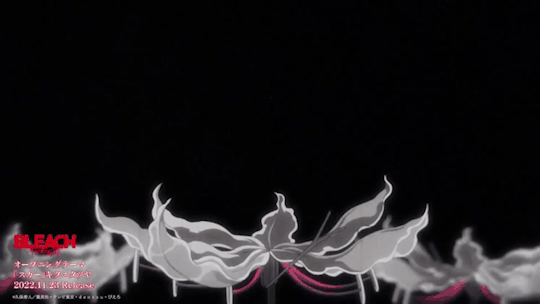
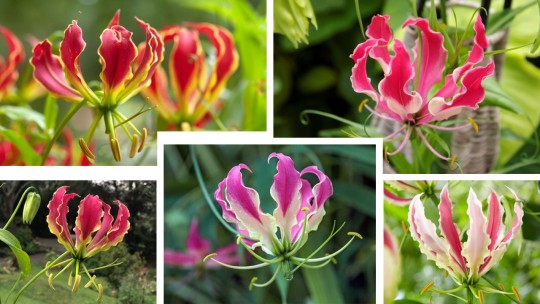

Aside from the 13 other flowers—which are associated with each of the Soul Society’s thirteen court guard squads respectively—the Gloriosa is also pictured in Bleach’s sixteenth opening theme song. The Gloriosa is also called the glory lily, flame lily and climbing lily. It is known as Gurorioosa (グロリオサ) in Japanese. Its hanakotoba meanings are glory and bravery. In English floriography, they also symbolise passion, purity, beauty and pride. Its name is derived from the Latin word “gloriosus” which means splendid. This name was inspired by its bright, fiery colouration and majestic, wave-like petals. The symbolism invoked by the Gloriosa not only greatly commemorates Bleach’s grand return with the TYBW arc—but also greatly complements Ichigo’s character. Ichigo’s name means to “protect one thing” and he has lived up to his name by bravely fighting in a number of glorious battles to protect those important to him.
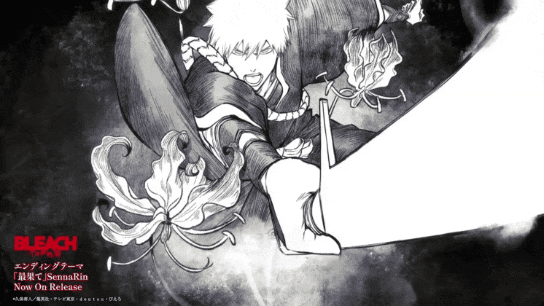

○●○●○●○●○●○●○●○●○●○●○●○●○●○
[If you liked this post, check out part 2 (here) and part 3 (here)... Also, here's the link to my directory of other hanakotoba analysis posts (here)]
[P.S. I didn't cover any of the other flowers featured in this opening since I feel like their meanings are common knowledge amongst the Bleach fandom already since they are the insignia of the Gotei 13... But if you guys want me to cover them properly, then I can in another post. So let me know in the comments...]
#this is short since there isn't a lot to unpack here...#I have 3 more hanakotoba posts planned for other anime so stay tuned!#I didn't elaborate on the gotei 13 insignia flowers also featured in this OP since I feel like they're common knowledge amongst the fandom#But if you guys want me to cover them...I can do so in a separate post...just lmk in the comments#bleach#bleach tybw#bleach tybw arc#tybw#tybw arc#tybw anime#bleach anime#bleach tybw cour 1#bleach tybw anime#bleach anime return#ichigo kurosaki#kurosaki ichigo#bleach ichigo#ichigo bleach#hanakotoba#bleach hanakotoba#anime hanakotoba#hanakotoba in anime#hanakotoba analysis#anime analysis#floriography#flower language#bleach op16#bleach opening#anime opening#anime music
114 notes
·
View notes
Photo
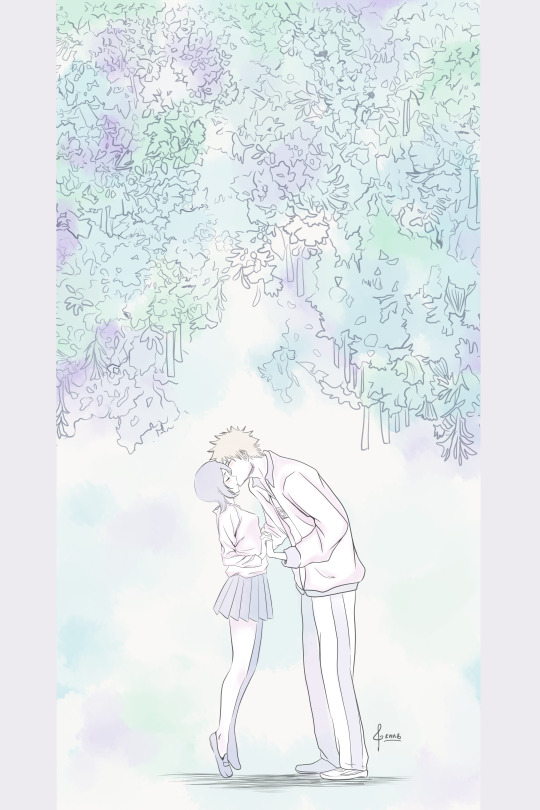
Day 24 Hanakotoba IRmonth2021
#hanakotoba#ichiruki#bleach#fanart#ichigo kurosaki#rukia kuchiki#hana#couple#kiss#digital drawing#anime style#digital painting
243 notes
·
View notes
Note
IM just curious, can you talk about gotei 13 and zero divisions'flower symbolism in BLEACH ?
I don't know that there's much to add outside of canon. I think Kubo mentions in various supplemental materials what his reasoning was, and I believe they all line up with pretty standard Japanese floriography, i.e. hanakotoba[花言葉] lit. "flower language."
I was cross referencing things with the Bleach wiki and I realize that I have no idea where Kubo actually confirmed his preferred/intended readings for there, and the wiki doesn't have any citations on it (because of course they don't) so I'm just going to list everything I found on hanakotoba.com and point out anything that feels appropriate...

Kiku[菊]: Chrysanthemum(Chrysanthemum morifolium)
Noble/Virtuous/Lofty
Truth (White chrysanthemum specifically)
It is also more broadly associated with Longevity, Rejuvenation, and Royalty as it is the crest of the royal family of Japan. Its use with 1st division is mostly likely just evoking a seat of authority rather than flower language.
Okina-gusa[翁草]: Nodding Anemone(Anemone cernua)
Unspoken love
Ask for Nothing
Treacherous Love(a love that betrays you)
Really just laser focusing in on Sui Feng specifically here. Aptly reflects her whole thing with Yoruichi, although I don't remember offhand when the first time we actually see 2nd division's flower insignia specifically. I do know we don't even really see Omaeda properly until right before the execution (and the lt. badges are the only place we see the flowers) so it could also have been assigned after their big fight and hsitory/relationship reveal.

Kinsen-ka[金盞花]: Marigold(Calendula officinalis)
Desolation/Loneliness
The Grief of Separation
Mourning
Loss of Hope/Despair
This one at least came up in the actual manga when Kira fought Abirama. But it does seem like another character specific and relationship based one at its inception. Reflects Gin's whole self isolation from Rangiku in his pursuit of revenge, as well as Kira's abandonment in the process.
Rindou[竜胆]: Autumn Bellflower(Gentiana scabra)
To Love the Grieving
Faithfulness/Fidelity
Sincerity/Good Faith
Justice
Reliability
I assume the face value reading here is meant to focus on the "Reliability" part as the medical team. That or maybe "Love the grieving" as a reference to a sort of doctor/nurse's bedside manor. The "Faithfulness & Fidelity" reading does suit Isane's quiet devotion to Unohana though.

Ase-bi[馬酔木]: Lily-of-the-Valley(Pieris japonica)
Sacrifice/Scapegoat/Victim
Dedication/Devotion
Self-sacrifice
Another rather personal jab. A clear indicator of Hinamori's fate. "Dedication" and "Devotion" on the surface might still suit the division, but ultimately Hinamori being a "victim" and "sacrifice" of Aizen's ambition very starkly foreshadowed in this.
Tsubaki[椿]: Camellia(Camellia japonica)
Pride/Honor
Modest Splendor/Modest Virtue
Unwavering Elegance
The red tsubaki is also kind of a classically samurai associated flower on its own, hanakotoba not withstanding. When the camellia dies the flowers drop off their stems without wilting and it's seen as a kind of metaphor for samurai ethics; Better to die quickly and with your good image intact than suffer the indignity of a prolonged wilting.
This I assume is a kind of adjacent meaning to "Pride/Honor" and "Unwavering elegance." And certainly that kind of fixation on the appearance of honor and dignity suites Byakuya's slavish devotion to law and propriety even at the cost of his wife's dying wishes, and indeed any pretense of familial obligation to Rukia as his adopted sister.

Gokurakuchou-ka[極楽鳥花]: Bird-of-paradise(Strelitzia reginae)
pretentious love
to love a man concerned with his appearance
It took me a moment to really parse this. Most elaborations I found just danced around terms for a "fop" or a "dandy" in describing what I eventually boiled down to just "a man concerned with his appearance" so the particular tone of vanity was misleading. But I think the joke is just that Komamura hiding his wolf head under a series of masks and helmets does indeed count as "concern with appearance" just not in the otherwise implied flamboyant way.
Also the term "pretentious love" sort of fits with Tetsuzaemon's overwrought yakuza-like loyalty and deference to Komamura as his boss. It's not a simple modest devotion it's overplayed and loud and draped in pomp and ritual. He isn't just devoted in action, he has to give the express appearance of devotion as well.
every single time... I don't know why these two always tri me up. I even told myself when I was shuffling the images around, "remember you always screw up komamura and shunsui's flowers, so whatever your instinct is, remember to switch that." And apparently that means i actually had it right first and actively made it wrong
Well, in the very least this makes the various terms floating around like "dandy" and "fop" make much more direct sense, as Shunsui is very much a fashionable and frivolous personality when he's first introduced...
Ayame[菖蒲]: Siberian iris(Iris sanguinea)
good news
hope/desire/ambition/expectations
I dunno this feels weirdly absent of real relation to Kyoraku or even Nanao. I will come back to that "Hope/Desire..." one though. So stick a pin in that...
...However now I don't know what to make of the ayame in relation to Komamura.
(and of course people reblogged this before i could get around to correcting it, so likely no one will ever see this edit >:T)

Shiro Keshi[白罌粟]: White Poppyseed(Papaver somniferum)
thoughtfulness/consideration/compassion
pity/sympathy/understanding
death/sleep/forget/oblivion
I don't really know what to make of this... The specificity of White Poppy means the reading really should be "Death" or "Sleep" and I guess that kinda ties into Tousen losing his friend. But that feels like a stupidly loose connection. On the other hand the more general meaning of the poppy as "compassion/pity/sympathy" seems to match more of Tousen's actual relationships with his dead friend, with Komamura, and even to a lesser degree with Hisagi.
To "forget" or be lost in "oblivion" however feels like a very knowing and ominous point in the direction of Tousen having lost his way and forgotten himself in his quest for justice.
Suisen[水仙]: Daffodil(Narcissus tazetta)
esteem/respect/reverence
unrequited love
Another rather personal one. The general tone of Respect and Reverence and High Esteem could maybe refer to Hitsugaya's need to be taken seriously despite his age and stature, but that feels like loose and far too general fit at best. His unrequited love for Hinamori however suits this far better.

Nokogiri-sou[鋸草]: Siberian yarrow(Achillea sibirica)
to fight/to struggle
bravery/courage, but also healing/a cure/recovery
Obviously the "Fight" bit is super literal. Honestly that may be all there is to it though.
Azami[薊]: Japanese Thistle(Cirsium japonicum)
indepencence/separation
retaliation/revenge
strict/strern
not to be touched
I'm not actually so sure about this. The general theme of "sternness/strictness/discipline" I guess kind of fits? But I think the general kind of natural warning sign of "Do Not Touch" is really the best fit for both Mayuri and the department as a whole, although it feels oddly informal as a reading compared to the rest.

Matsuyuki-sou[待雪草]: Snowdrop(Galanthus nivalis)
relief/ease/comfort/solace
hope/desire/ambition/expectations
So the "Relief/Solace/etc..." bit certainly seems to fit Ukitake's demeanor as his terminal illness does indeed require him to frequently take an aside to lie down. But I was surprised to find that the "Hope/Desire/etc..." reading appeared here as well as with the Ayame, and I don't think it's coincidence that Kyoraku and Ukitake have matching themed flowers for their divisions.
Incidentally this also ties into Kaien as lt. since the Shiba name echos this same meaning of "Ambition".
Jinchou-ge[沈丁花]: Winter Daphne(Daphne odora)
Glory/Honor
Immortal/Indestructible/Eternal/Timeless
This one seems pretty obvious. "Glory" and "Indestructible" describe their reputation well enough, although they turned out to be far from indestructible, unfortunately.
It always kind of confused me that Kubo put their flower insignia inside the Gotei diamond, not only because they aren't supposed to be part of the gotei, but because it just seemed to break so many other design patterns... but then I realized that the only parts of the shinigami uniforms where the flowers are ever visible are on lt. badges(limiter stamps and the little sewn in tags being hidden) and there weren't any lieutenants in the royal guard.
Feels like a halfbaked idea to slap them on the coats just to make sure they show up somewhere, but then so was most of their introduction and role in the plot.
#bleach#bleach meta#shinigami#gotei 13#yep....#sure enough everyone is reblogging some version the unedited post#with my flagrant errors intact and on display#and none of the corrections#=______=
185 notes
·
View notes
Text
Bleach Hanakotoba Analysis Part 2 ~ ED31: Saihate
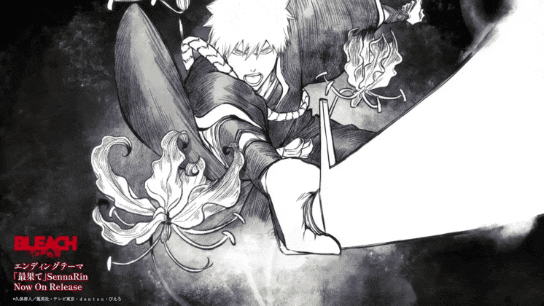
○●○●○●○●○●○●○●○●○●○●○●○●○●○
-> Rukia Kuchiki: Cherry Blossom


In the extended version of Bleach’s 31st ending theme song, Rukia Kuchiki is pictured with branches of the cherry blossom tree. The cherry blossom (Prunus serrulata) is also known as the Japanese cherry and is the unofficial national flower of Japan. Its Japanese name Sakura (桜) has been derived from the word “saku” which means “to bloom”. Its meanings in hanakotoba are “beauty of spirit”, grace, chastity, excellent beauty, gentleness, good education and the “transience of life”. In Japan, cherry blossoms are also a symbol of the “beauty of impermanence”—a Shinto concept better known as “mono no aware” (物の哀れ) as their falling petals are a reminder that although life is short, it is beautiful and should be savoured. The Japanese concept of “natsukashii” (懐かしい) likewise emphasizes the fleeting nature of cherry blossoms. This concept refers to the happy-yet-wistful nostalgia for times and things that we will never be able to go back to. We will never get to experience those moments again, just like the ephemeral cherry blossoms, which makes them even more significant. Cherry blossoms bloom from March to April which is the start of the new fiscal year in Japan. As a result of this cherry blossoms have also come to symbolise new beginnings and springtime. Given that feudal Japanese soldiers associated cherry blossoms with honour, discipline, and dignity—falling flowers were thought to be symbolic of a Samurai's death. In Western floriography, cherry blossoms herald the changing of the seasons and symbolise renewal and rebirth. They also symbolise the fleeting nature of life, tenderness, forgiveness, strength, beauty, love, confidence, peace, friendship and gratitude. Rukia Kuchiki presents herself as a cool, restrained and stern warrior with firm convictions, however occasionally she breaks out of her shell and is kind. She tends to keep her emotions to herself, unless she is irritated, and finds it difficult to confide in others. This ties in with the cherry blossom’s meanings of grace, discipline, chastity, honour and dignity. Throughout the series, Rukia is constantly improving herself and growing not only in strength but also in confidence. This complements the cherry blossom’s meanings of confidence, strength, new beginnings, springtime and the changing of the seasons. One of the cornerstones of Bleach's development is the connection between Ichigo and Rukia. Ichigo was able to protect his loved ones and become involved in the affairs of the soul society thanks to Rukia's initial transfer of her abilities to him. Since then, they have often come to each other's rescue and have developed a strong sense of gratitude, admiration, respect, and trust for one another. This ties into the cherry blossom’s meanings of strength, gratitude, friendship and love. Cherry Blossoms also tie into Rukia’s connection with her adopted brother, Byakuya and her sister, Hisana. Upon her death, as she looked at the first cherry blossoms of the season, Hisana asked Byakuya to find and protect Rukia as she regretted abandoning her years ago and felt unworthy of being her sister. This complements the cherry blossom’s meanings of forgiveness, love and the fleeting nature of life.
-> Uryū Ishida: Edelweiss
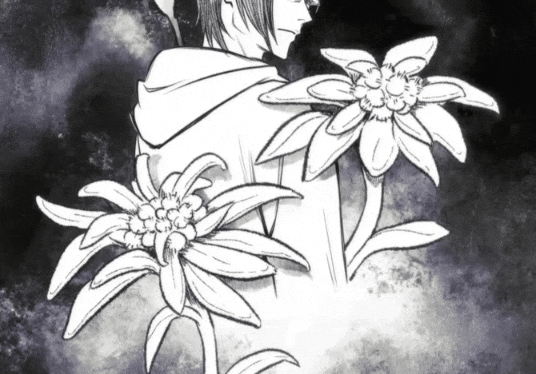
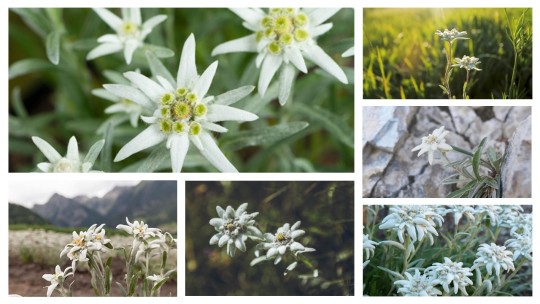
Edelweiss (Leontopodium nivale) is known as Ēderuwaisu (エーデルワイス) in Japanese. Its meanings in hanakotoba are are courage, power and precious memories. Its name translates from German to mean "noble white". Edelweiss is only found in white-blooming variants, unlike most other flowers. These reasons are the basis for the flower's symbolic connotations in Western floriography, which include innocence, purity, renewal and wishes for peace. The flower also represents integrity, excellence, elegance, noble courage, and boldness. Edelweiss flowers are well-adapted to high-altitude environments with frigid temperatures, harsh sunlight and low oxygen levels and have thus come to represent rugged beauty, strength, nobility, adventure and perseverance. The Edelweiss flower also represents intense devotion, sacrifice, care, and deep love. One of the most well-known stories about the edelweiss is about a young man who, in an act of bravery and love, risks his life to climb a mountain’s steep rocky face to gather edelweiss flowers for a woman. Uryū Ishida is typically reserved, independent, and solitary—however, he tries to act cool when among other people. He has a strong sense of justice and is incredibly intelligent and chivalrous. These attributes greatly complement the Edelweiss’ meanings of integrity, excellence, elegance, boldness and noble courage.
-> Renji Abarai: Sasanqua Camellia

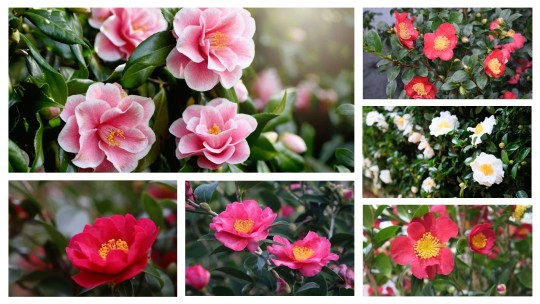
The flower Renji is pictured with is the sasanqua camellia (Camellia sasanqua) which is a species of camellia native to both China and Japan. It is a different species than the camellia pictured with Byakuya Kuchiki in this ending (Camellia Japonica). The Camellia Sasanqua and Camellia Japonica are primarily differentiated by the former’s earlier blooming season (early fall to early winter) as well as its smaller leaves and flowers. In addition to this, Camellia Japonica’s flowers fall whole, while Camellia Sasanqua's petals fall apart. The sasanqua camellia is known as the sazanka (山茶花) in Japan. Its meanings in hanakotoba are dedication and overcoming difficulties. In Japan, red sazanka represents humility and beauty, white sazanka represents charm and rejection and pink sazanka represents eternal love. In Western floriography, the sasanqua camellia represents desire and passion. It is said that the sasanqua's meanings of "overcoming difficulties" and "dedication" are derived from the fact that flowers bloom in early winter when the cold intensifies. Renji Abarai comes across as dynamic, eccentric, brash, and stubborn, yet he is also incredibly dedicated and determined, willing to fight and die for his convictions. This ties in with the sasanqua’s meanings of passion, dedication and overcoming difficulties.
-> Yasutora Sado: Canna Lily
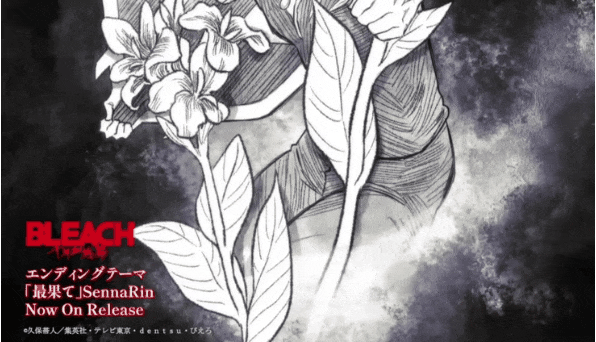

The Canna lily (Canna) is known as kanna (カンナ) in Japan. Its meanings in hanakotoba are passion, cheerfulness, eternity and delusion. In Western floriography, the canna lily holds the meanings of beauty, protection, purification glory, power, hope, confidence and confiding in heaven. The flower also holds the negative connotations of paranoia and suspicion. The vigour and beautiful appearance of its flowers, which can withstand the midsummer sun, are thought to be where its meanings of passion and cheerfulness are derived from. Yasutora Sado is a quiet but incredibly brave, strong, and kind person who is also extremely loyal. These traits tie in with the canna lily’s meanings of passion, power, confidence and protection. Additionally, canna lilies originate from Latin America and tropical Asia and are exotic and vibrant with a rich cultural and symbolic history. This ties in with Sado’s half-Mexican heritage. In mythology, it is said that a demon who was envious of Buddha’s strong spiritual power threw a large boulder down on him from above. However, most of the rock shattered at Buddha’s feet without hitting him with only one fragment hitting his toe. Where the blood from his wound dripped onto the ground, a red canna lily blossomed, and the devil was swallowed by a rift of the earth due to its wrath. This legend is reminiscent of the scene where Sado was struck by a falling steel beam, which fractured but did not injure him as well as one of his fullbring powers, named “Left Arm of the Devil”.
-> Orihime Inoue: Glory-of-the-snow
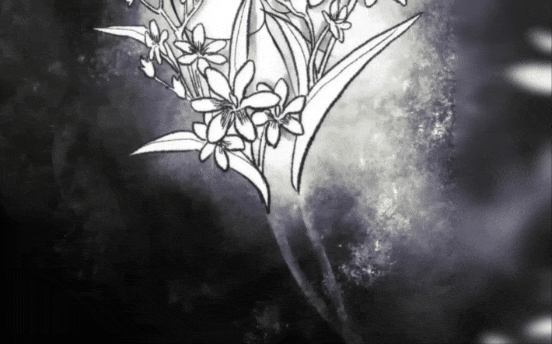
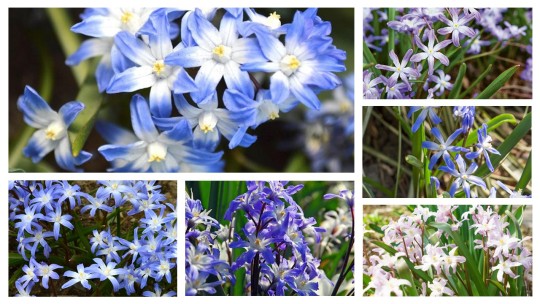
Glory-of-the-snow (Scilla section Chionodoxa) is known as yukigeyuri (雪解百合) in Japan which translates to “snowmelt lily”. Its meanings in hanakotoba are purity, innocence, hope, modesty and compassion for friendships. It is also considered a sign of spring as it blooms when the snow melts. In Western floriography, it symbolizes glory, camaraderie and toughness. Although she comes out as naive and ditzy, Orihime Inoue is better described as being sensitive, caring, amiable, funny, and optimistic. This strongly complements the glory-of-the-snow’s meanings of purity, innocence, hope and compassion for friendships. Furthermore, the star-shaped, six-petaled flowers of the glory-of-the-snow closely resemble Orihime's flower hairpins that her late older brother had given her.
○●○●○●○●○●○●○●○●○●○●○●○●○●○
[If you liked this post, check out part 1 (here) and part 3 (here)... Also, here's the link to my directory of other hanakotoba analysis posts (here)]
[P.S. Here is the continuation of my hanakotoba analysis on Bleach as promised... Thank you to @jushiro-ukitake & @elyonholic for reminding me about the flowers featured in the extended ending. Given that the flowers are black and white, it was difficult to identify them—so if I misidentified any of them, I apologize; I did my best. Also, I had to put the Gotei 13 squad flowers in a separate post because of Tumblr's image limit...]

#tried to keep this brief but ended up rambling lol#bleach#bleach anime#hanakotoba analysis#bleach hanakotoba#bleach florigraphy#hanakotoba#floriography#anime hanakotoba#anime analysis#bleach ed 31#bleach op16#anime openings#anime endings#anime music#anime#bleach tybw#bleach tybw part 1#bleach tybw part 2#bleach tybw anime#tybw#gotei 13#soul society#rukia kuchiki#kuchiki rukia#ichigo kurosaki#kurosaki ichigo#uryuu ishida#ishida uryuu#uryu ishida
84 notes
·
View notes
Text
Bleach Hanakotoba Analysis Part 3 ~ OP16: Scar & ED31: Saihate
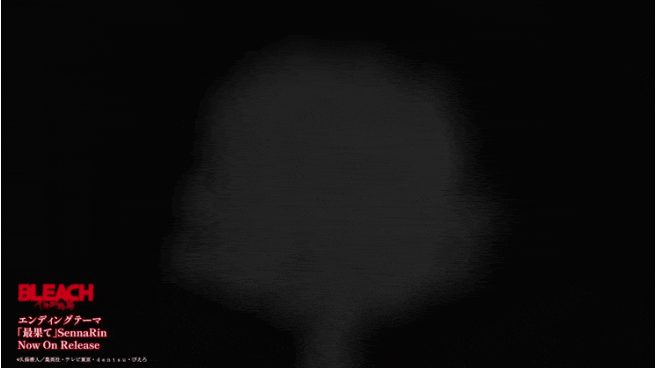
○●○●○●○●○●○●○●○●○●○●○●○●○●○
-> Division 01: Chrysanthemum
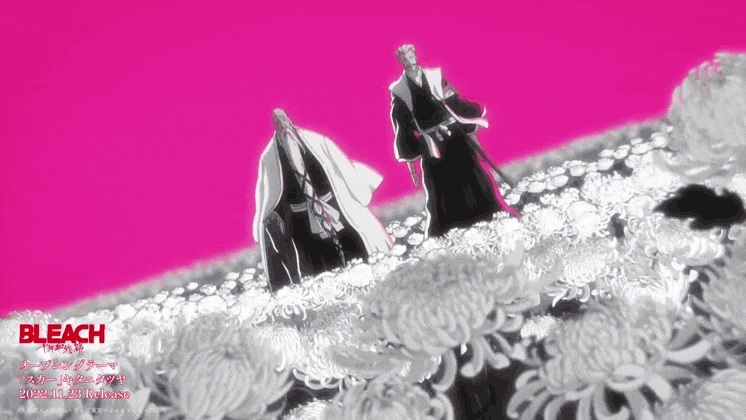

The flower insignia of the 1st division is the chrysanthemum (Chrysanthemum morifolium) which is known as kiku (菊) in Japanese. According to the official Bleach lore, this flower signifies truth and innocence. Its meanings in hanakotoba include nobility, virtuousness, perfection, rejuvenation, longevity and good luck. A sixteen-petalled chrysanthemum is not only one of Japan’s two unofficial national flowers but is also used on Japan’s imperial seal. In Western floriography, Chrysanthemums symbolise cheerfulness, devoted love, loyalty, happiness longevity, joy, trust, optimism, fidelity and friendship. In some cultures, Chrysanthemums—particularly white ones—are only associated with mourning, sympathy and death.
-> Division 02: Pasque flower

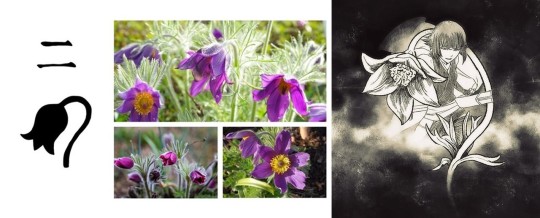
The flower insignia of the 2nd division is the Pasque flower (Pulsatilla) which is also known as the nodding anemone and wind flower. It is called the okinagusa (翁草) in Japan. According to the official Bleach lore, this insignia means “seeking nothing”. Its additional meanings in hanakotoba include “untold love”, “pure heart”, and “love of betrayal”. The downward flower of the Pasque flower is said to have given rise to it symbolising "untold love" and "pure heart" as this is thought to mirror the feelings of a pure girl who is ashamed of her sentiments and finds it difficult to express them. The Pasque flower's symbolic meaning of a "love of betrayal" stems from the fact that after reaching their peak, the flowers that initially bloom face downwards turn upward. In Western floriography, the Pasque flower represents rebirth, renewal, hope, dignity, nobility, grace and the phrase “forsaken in love”.
-> Division 03: Marigold
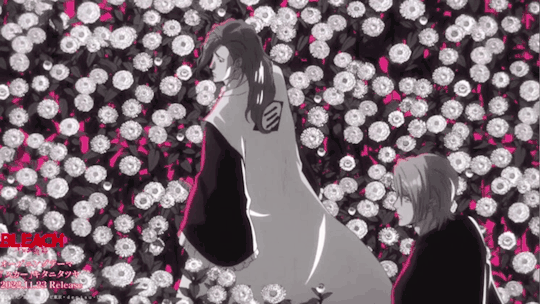

The flower insignia of the 3rd division is the marigold (Tagetes) which is known as the marīgōrudo (マリーゴールド) in Japanese. According to the official Bleach lore, this flower signifies despair. Its meanings in hanakotoba include jealousy, despair and sadness. In Western floriography, they symbolise grief, despair, and jealousy as well as the expression of deep feelings and passion.
-> Division 04: Bellflower
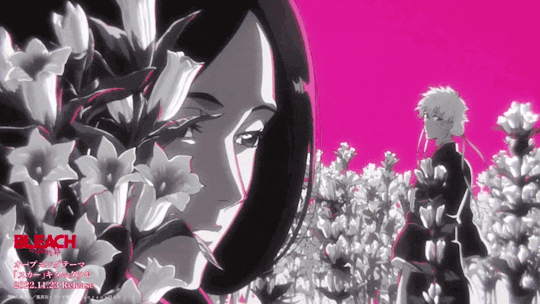

The flower insignia of the 4th division is the bellflower (Campanula) which is known as the berufurawā (ベルフラワー ) and otome kikyo (乙女桔梗 ) in Japan. According to the official Bleach lore, this flower signifies that “those who grieve are loved”. Its meanings in hanakotoba include gratitude, sincerity and pleasant chatter. Bellflowers are a symbol of gratitude, constancy, romance, and support in Western floriography. Additionally, bellflowers can stand for affection, delicacy, humility, and everlasting love. In particular, blue bellflowers are symbolic of peace, healing, openness, tranquility, and friendship—on the other hand, cream bellflowers are symbolic of thoughtfulness, grace, elegance, peace, and hope. Given that a bellflower's shape resembles a church bell, it is believed that the flower's symbolic meanings of gratitude and sincerity originate from church teachings. It is thought that the bellflower's symbolic meaning of pleasant chatter originates from the observation that its flowers which point diagonally upward bloom together giving the impression that the small flowers are merrily conversing with one another.
-> Division 05: Lily of the Valley

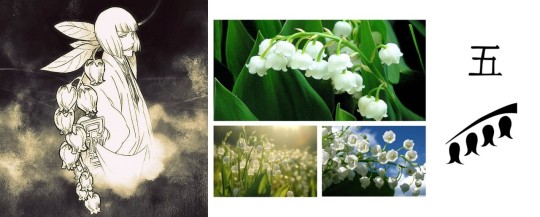
The flower insignia of the 5th division is the lily of the valley (Convallaria majalis) which is known as suzuran (鈴蘭) in Japanese. According to the official Bleach lore, this flower represents sacrifice, danger, pure love, humility and sweetness. Its meanings in hanakotoba include purity, humility, sweetness, chastity and finding happiness again. These flowers are symbolic of purity, humility, sweetness, rebirth, good fortune, joy, youth, discretion and a return of happiness in Western floriography. With its lovely, sweet aroma, it's difficult to believe that such a demure-looking flower could be dangerous. It is crucial to highlight, however, that this flower is an extremely toxic plant that, if consumed, can cause severe disease or death. The Lily of the Valley plant contains around 38 distinct cardiac glycosides (cardenolides)—which are a class of organic compounds that increase the output force of the heart and decrease its rate of contractions—that are exceedingly poisonous to both humans and animals. Given its toxicity, it's ironic, that the plant is associated with good fortune, purity, joy, and sweetness.
-> Division 06: Camellia
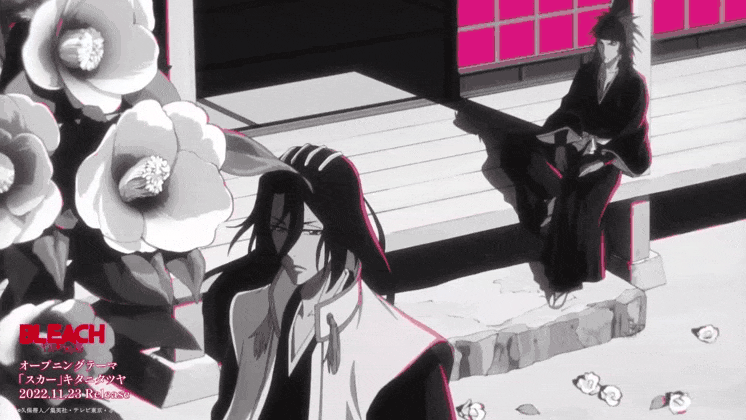
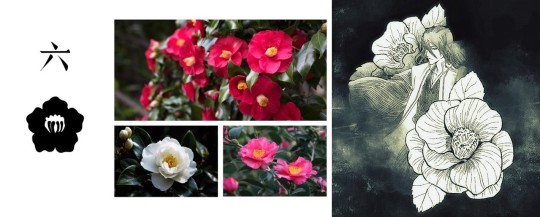
The flower insignia of the 6th division is the Japanese camellia (Camellia japonica) which is known as tsubaki (椿) in Japanese. According to the official Bleach lore, this flower represents “noble reason”. Its meanings in hanakotoba include modest kindness and pride. In Western floriography, camellias have a long-standing symbolic association with romance and devotion. They symbolize strong desire and passion as well as unfaltering love, devotion, affection, refinement, perfection, faithfulness, and admiration. Normally, the petals and calyx separate as a flower dies, but in the case of camellias, the petals and calyx fall together, preserving the entire flower. In recognition of this, camellias are used to represent longevity, perfection, and pure, unreserved, love that never fades. Red camellias are thought to represent romantic love, passion, or desire. Pink camellias convey feelings of longing and gratitude. White camellias are associated with purity, faithfulness, admiration, perfection, and good fortune. On the other hand, white camellias are regarded to bring bad luck in Japan since they are associated with death and mourning.
-> Division 07: Iris
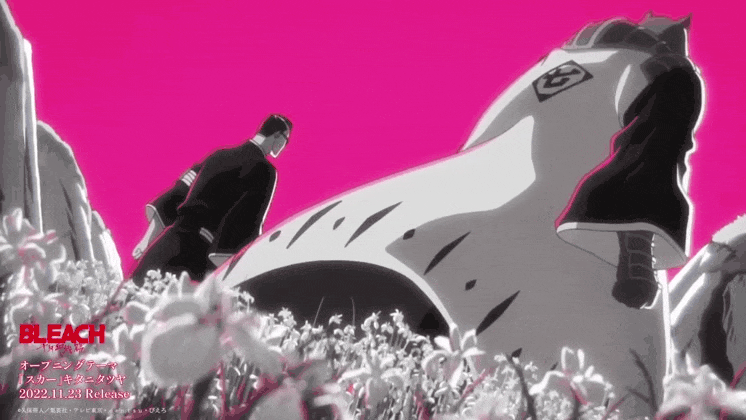
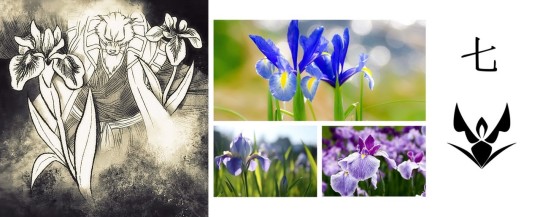
The flower insignia of the 7th division is the iris (Iris japonica) which is known as ayame (菖蒲) in Japanese. According to the official Bleach lore, this flower signifies courage. Its meanings in hanakotoba include glad tidings, loyalty, messages, hope, graciousness as well and kindness of the heart. In Western floriography, they symbolise hope, faith, friendship, wisdom, royalty, valour and messages.
-> Division 08: Crane flower
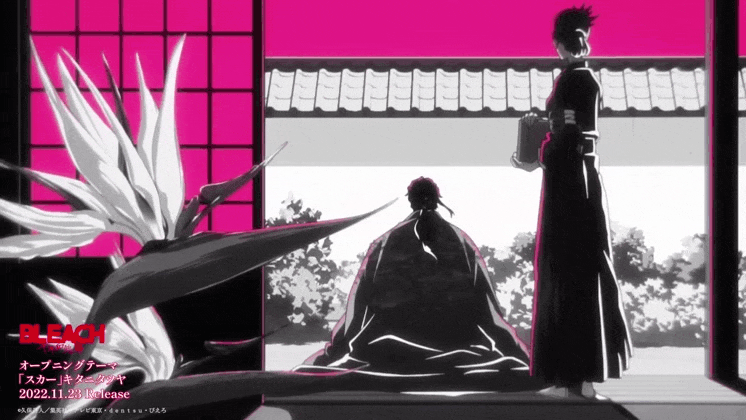
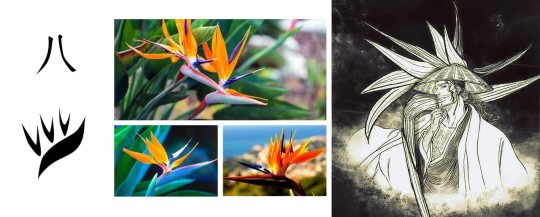
The flower insignia of the 8th division is the Crane flower (Strelitzia) which is also called the Bird of Paradise flower. In Japan, it is known as the Gokurakuchouka (ゴクラクチョウカ ). Its Japanese and English names are derived from the flower’s resemblance to a family of tropical birds native to New Guinea called Paradisaeidae. According to the official Bleach lore, this flower represents “everything that is obtained”. The phrases "date in love" and "pretentious in love" are its hanakotoba meanings. The exotic appearance of the flower, which is compared to a person in love, is considered to be the basis of these connotations. In Western floriography, the crane flower symbolizes magnificence, faithfulness, excellence, success and well as having joy in the face of both challenges and successes alike. Additionally, they also symbolize freedom due to the flower’s resemblance to a bird in flight. The Crane flower is native to South Africa where it holds the meanings of freedom, success, loyalty, thoughtfulness, immortality, love and optimism.
-> Division 09: White poppy
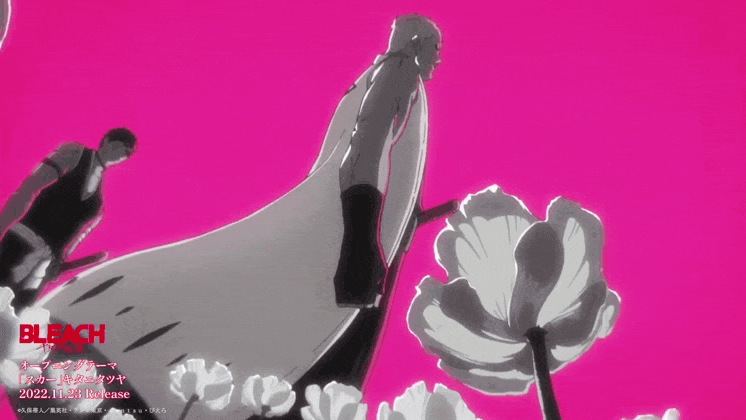
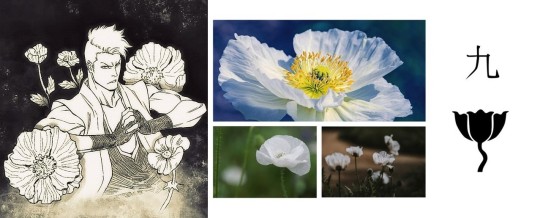
The flower insignia of the 9th division is the white poppy (Arctomecon merriamii) which is known as shiroi popī (白いポピー) in Japanese. According to the official Bleach lore, this flower symbolizes oblivion. Its meanings in hanakotoba are sleep and oblivion. In Western floriography. White poppies represent sleep and peaceful rest. They are associated with faith and the concept of the soul's eternal life, and they also serve as a symbol of remembrance for deceased loved ones. Given that white flowers are symbolic of purity; white poppies are a symbol of restful sleep, pleasant dreams and renewal.
-> Division 10: Daffodil

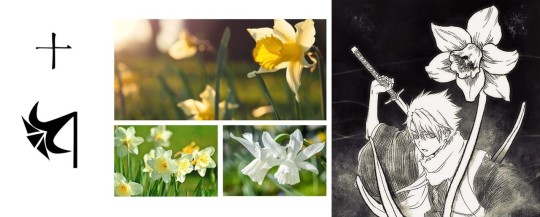
The flower insignia of the 10th division is the daffodil (Narcissus) which is known as suisen (水仙) in Japanese. According to the official Bleach lore, this flower signifies mystery and egoism. Its meanings in hanakotoba include self-love and self-esteem. Yellow daffodils in particular are linked to the phrases "come back to me" and "I want you to love me again." In English floriography, daffodils represent self-love, respect, egoism, and unrequited love. In contrast with the aforementioned negative connotations, daffodils also represent strength, overcoming hardships, and the arrival of success and wealth. White flowers typically symbolize purity—however white daffodils signify a desire for transformation.
-> Division 11: Yarrow
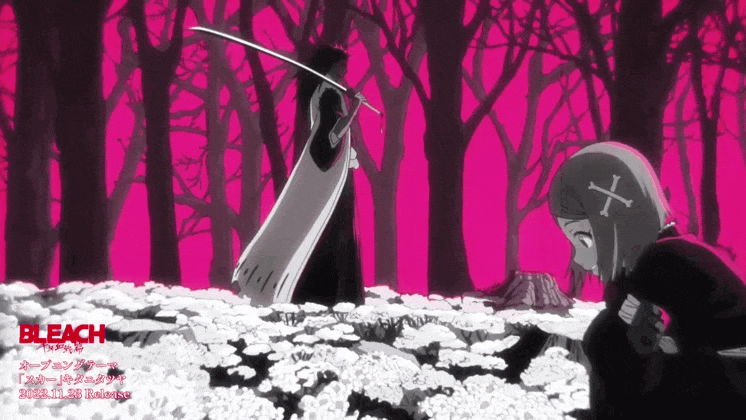
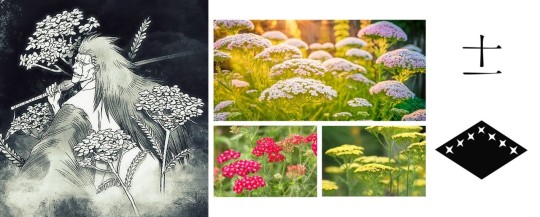
The flower insignia of the 11th division is the yarrow (Achillea alpina) which is known as nokogiri (鋸草) in Japanese. According to the official Bleach lore, this flower signifies fighting. Its additional meanings in hanakotoba include bravery and healing. The yarrow is a symbol of bravery in Western floriography, particularly in times of war, and wearing it is said to bestow courage and protection. The yarrow is also said to represent everlasting love, healing and good health because of its medicinal properties. Its Japanese name, “nokogiri”, translates to “saw grass” and is presumably derived from how the tooth-like shape of a saw’s teeth resembles the plant’s bipinnate/tripinnate leaves.
-> Division 12: Thistle

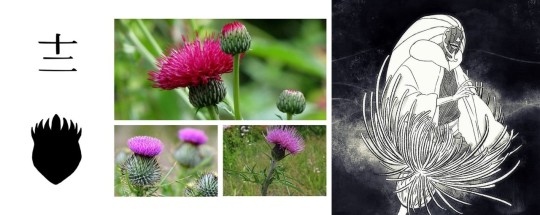
The flower insignia of the 12th division is the thistle (Cirsium spp.) which is known as azami (アザミ) in Japanese. According to the official Bleach lore, this flower signifies vengeance, strictness and independence. Its meanings in hanakotoba are independence, retaliation, sternness and “do not touch”. In western floriography, thistles symbolise austerity, nobility of character, independence and misanthropy. In the Victorian era, the gift of thistle flowers served as a warning against unwanted meddling. These flowers are incorporated in the expression “as prickly as a thistle” which describes someone who is easily enraged, particularly in the face of criticism. As Scotland’s national flower, thistles represent bravery, luck and strength. Thistles are referred to as the "flower of the sun" and the "herb of the witches" in the Basque area of France. It is said that thistles provide protection from evildoers and witchcraft because witches are said to be unable to look directly at the sun.
-> Division 13: Snowdrop

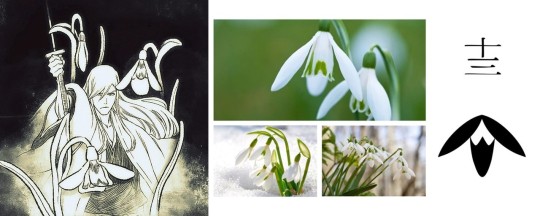
The flower insignia of the 13th division is the snowdrop (Galanthus nivalis) which is known as the sunōdoroppu (スノードロップ) and the matsuyukisou (待雪草) in Japan. According to the official Bleach lore, this flower represents hope. Its meanings in hanakotoba are hope and consolation. In Western floriography, the snowdrop represents purity, rebirth, sympathy and hope. A single snowdrop was seen by the Victorians as a symbol of death and was unlucky to bring into a home. On the other hand, the snowdrop is also associated with rebirth, springtime, and the ability to overcome life's challenges. The snowdrop blooms from mid to late January as winter slowly begins to end thereby reminding us that there is light at the end of the tunnel. It reminds us all that if we put our minds to it, we can achieve great things in life. It also serves as a reminder of change and represents a willingness to grow. Snowdrops are thus often gifted to those trying to move forward from sadness and negativity.
○●○●○●○●○●○●○●○●○●○●○●○●○●○
[If you liked this post, check out part 1 (here) and part 2 (here)... Also, here's the link to my directory of other hanakotoba analysis posts (here)]
[P.S. Here is the final part of my hanakotoba analysis on Bleach. I kept things brief and didn't go into how each flower suits each squad, captain and vice-captain primarily because of time constraints... Also, I doubt anyone wanted to do that much reading lol... I'll happily elaborate and answer any questions in the comments though...]
#tried to keep this brief but ended up rambling lol#bleach#bleach anime#hanakotoba analysis#bleach hanakotoba#bleach florigraphy#hanakotoba#floriography#anime hanakotoba#anime analysis#bleach ed 31#bleach op16#anime openings#anime endings#anime music#anime#bleach tybw#bleach tybw part 1#bleach tybw part 2#bleach tybw anime#tybw#gotei 13#soul society#bleach captain#bleach captains#gotei 13 captains
84 notes
·
View notes
Note
I hope you don’t mind me messaging you but it’s probably easier to share links this way 😅
I’ve been hoping someone would identify the six hearts gang’s flowers from here
https://www.tumblr.com/dont-look-up/704735395766730752/tybw-cour-1-special-ed-six-hearts-gang
https://m.youtube.com/watch?v=3iptnJEg1kI&ab_channel=アニプレックスチャンネル
Hopefully those links work lol
Thanks!
I don't mind at all🌸 Once again, thank you for the suggestion...I'll get to working on it as soon as I can.
I love this ending so much and listen to it so much that I've memorized the lyrics—but I had no idea there was a longer animated version🥲 So thank you for letting me know. The visuals are so stunning😭
Identifying and researching everything might be a little tricky because everything is in black and white. Since colour not only helps with identifying the flower but also greatly influences its meaning...But I'll definitely try my best.
4 notes
·
View notes
Note
Hi, thank you for posing about Gintama, I love this anime sm and it was nice knowing more about the flowers in OP 15 👏
please tell us more about Bleach Tybw OP and extended ED
thank you.
Hi, thanks for sending an ask🌸✨️ I'm glad you enjoyed my Gintama post (it's my 2nd favourite anime, so I love talking about it any chance I get😂).
I've already been working on the Bleach TYBW extended ED since another person suggested it. While I was busy with it, I thought that I might as well expand on what I skipped in the OP—since all of the flowers made another appearance in the ED.
I sadly probably won't go into a lot of detail about how the flower suits the characters—for the division insignia—since analyzing 13 captains and 13 vice captains personalities is a lot. Also, I feel like not all the flowers suit the captains/vice captains and more so suit the divisions itself.
I will go into more detail on Rukia, Renji, Uryu, Orihime, and Sado since they got individual flowers (despite it being a bit hard for me since I dislike some characters hehe🥲)... I will say that identifying the flowers for those 5 have been challenging since the black & white colour scheme and artsytle make it difficult to identify the flowers clearly....But I think I have have down so it's just a matter of putting the research together, formatting and explaining things...
Sorry for rambling on😅
#frostfire-asks#anime#bleach#bleach anime#bleach tybw#bleach hanakotoba#hanakotoba#anime hanakotoba#floriography#flower meanings
1 note
·
View note
Note
Hi, Frost! How are you? Now, all your posts are amazing! Thanks for sharing them... I know you through your "Hanakotoba" posts, so can I ask your top 3 favorite flowers (based on their meaning) or your top 3 favorite flowers (based on their beauty)?
Ok, this is random but is it weird that you can dislike a certain anime/manga because the mc is really "you"? For me submisive femMC just like seeing in mirror so I don't like those characters (Miyo, Sawako, Yuki, etc). Sorry....
Now, can I ask at least 3 characters from any anime/ manga that really describe you (they don't have to be your fav but they're really "you")? Also, if you can pick whichever 3 anime/manga character, who that you want to befriend with?
Anime recs time!
Because you love anime & BL, have you watched Blue Lock : Episode Nagi? It's anime movie and I think it's one step away from official BL. It's okay to watch them even if you're not familiar with Blue Lock series.
Also, have you watched the new anime (non-shipping) "Medalist"? It's so good about figure skating of a girl and her coach's strugles....
And these are some of my favorite non-romance shoujosei that focused on male MC & ML and mainly have male characters? Like: Jeweler Richard, Servamp, Kyo Kara Maoh, Idolish7, Laughing Under the Clouds, and Hakkenden.
Have you watched any of the above? Sorry if you already know and don't like them, Frost (sorry can I call you that or do you want me to use other name?)
Hi, I'm alright thanks. Thanks for your support I'm glad you enjoy my Hanakotoba posts they're my favorite ones to do. I'm going to be working on 3 new ones in the near future—after I'm done with my Valentine's Day post.
══════════════════
I've actually been waiting for someone to ask me this question—even though I've probably covered most of my favourites in my hanakotoba post series. So, thanks for asking! My list of favourite flowers based on symbolism is pretty much synonymous with my list of favourites based on appearance—so I hope you don't mind my decision to merge both questions. Also, there are very few flowers I don't like, so I'm going to reveal my top eight. Also, I opted to tie first place because I couldn't choose haha...
→ My Top 8 Favourite Flowers:
6) Plum blossom│ Prunus mume│ 梅
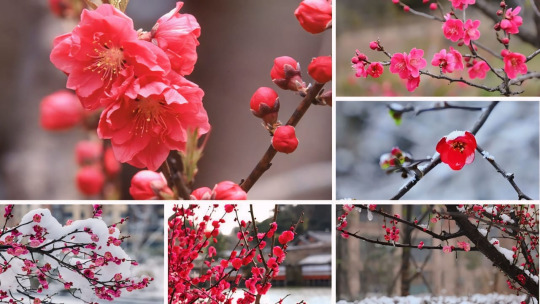
Plum blossoms are the national flower of China and are associated with the end of winter and the beginning of spring.
Japanese hanakotoba: integrity, patience, elegance, loyalty & faithfulness
Chinese symbolism: endurance, perseverance, vitality, inner strength, hope & thriving through adversity
Western floriography: independence, keeping promises, fidelity, beauty, prosperity, purity, good fortune, longevity, hope, perseverance, courage, & beauty's capacity to overcome adversity
5) Wisteria│藤
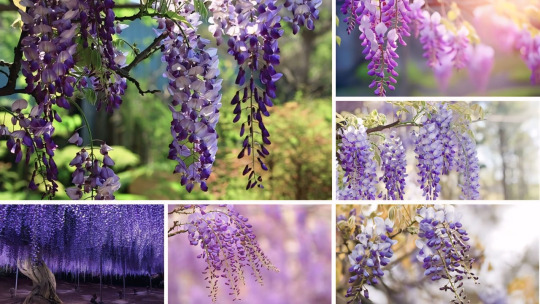
This climber is known for its beautiful, fragrant blossoms and was believed to bring good fortune and ward off evil spirits in many cultures.
Japanese hanakotoba: kindness, welcoming, honour, wisdom, endurance, longevity, immortality, steadfastness, support, nobility, kindness, tenderness, sensitivity, never leave & intoxicated/drunk in love
Chinese symbolism: immortality, longevity, and wisdom, honour, respect, beauty, grace & harmony
Western floriography: mystery, enchantment, longing, steadfastness, faithful, welcoming, tenderness, sensitivity, love, romance & beauty
4) Camellia │Camellia japonica│ 椿
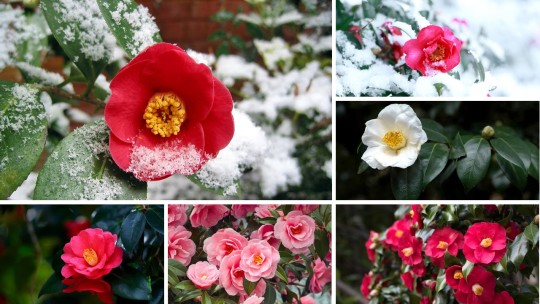
Camellia flowers range from pure white to soft pink to deep red.
With proper care, camellia plants can live for many years. It is said that the camellias around the emperor’s palace in Japan are known to be more than 500 years old.
Japanese hanakotoba: modest kindness, pride, eternal love, enduring love, (Red: in love, perishing with grace, humble virtue, modest splendour, unpretentious grace), (White: waiting, complete beauty, impeccable charm, supreme loveliness) & (Pink: longing, missing someone, love, modesty, modest beauty),
Western floriography: constancy, steadfastness, perfect loveliness, unpretending excellence, adoration, longing, admiration & perfection
3) Red Spider Lily │Lycoris radiata │(彼岸花)
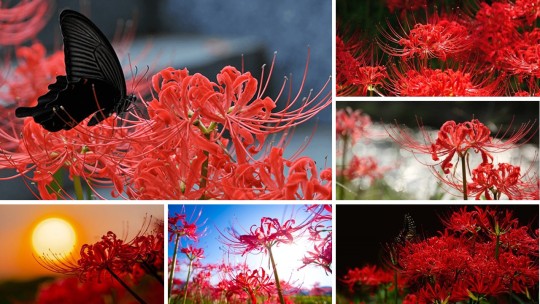
These flowers are commonly called the "flowers of death" not only because of their ominously vibrant colour and poisonous bulbs—but also because they were commonly planted around graves to ward off animals.
It is believed that these flowers aid spirits in crossing from the near shore (the world of the living) to the far shore (the land of the dead) or their next reincarnation.
Japanese hanakotoba: sad memories, resignation, independence, lost memory, abandonment, passion, "those who are never to meet again", death, goodbyes, rebirth, "the far shore" / (land of the dead), strength and perseverance in the face of adversity,
Chinese symbolism: lost memories, grief, death
Western floriography: abandonment, loss, separation, death & the cycle of rebirth.
2) Lotus │ Nelumbo nucifera │蓮 & Water Lily │Nymphaea│睡蓮
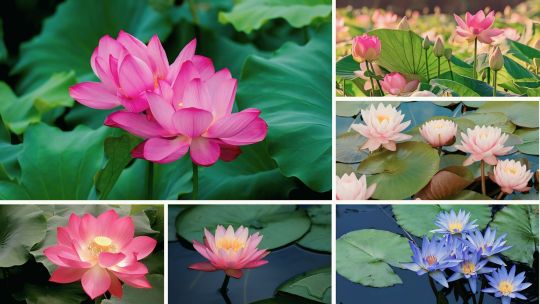
While they belong to different families and bear subtle differences in appearance, throughout history these two flowers have been confused for one another leading to significant overlap in their symbolic meanings—hence my decision to include them as a collective.
The lotus is the national flower of Vietnam and India—while the water lily is the national flower of Bangladesh, Iran, and Sri Lanka.
Japanese hanakotoba: eloquence, detached love, sacredness, "a pure heart", faith & trust
Chinese symbolism: endurance, elegance, resilience, wisdom, peace, perfection, humility, enlightenment, purity, balance, rebirth, divine beauty, grace, moral integrity, "triumph over adversity", "ultimate purity of mind and heart", "continuous pursuit of knowledge", "love, marriage and unions", "yearning for harmony and a shared heart" & "the importance of maintaining inner purity and virtuous behaviour in the face of worldly temptations"
Western floriography: purity, chastity, eloquence, rebirth, estranged love, virtue, innocence, balance, unity, dangerous beauty, admiration, "purity of the heart", "achieving great things", "beauty rising from humble beginnings" & "bringing together separate things"
1) Cherry Blossom│ Prunus serrulata│ 桜
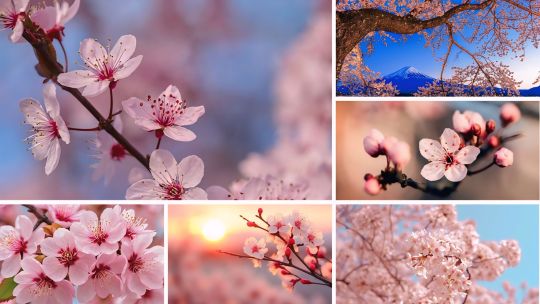
Cherry blossoms are one of Japan's two unofficial national flowers and are incredibly culturally significant.
Cherry blossoms are associated with many complex Japanese concepts such as "mono no aware" (物の哀れ)—which refers to the "beauty of impermanence"—and "natsukashii" (懐かしい)—which refers to a "happy-yet-wistful nostalgia for times and things that we will never be able to go back to"...
Japanese hanakotoba: grace, chastity, excellent beauty, gentleness, good education, new beginnings, springtime, honour, discipline, dignity, "transience of life” & “beauty of spirit”
Chinese Symbolism: beauty, femininity, power & mysteriousness
Western floriography: changing of the seasons, renewal, rebirth, "fleeting nature of life", tenderness, forgiveness, strength, beauty, love, confidence, peace, friendship & gratitude.
1) King Protea│Protea cynaroides│プロテア
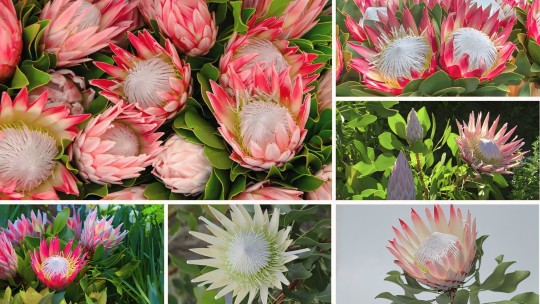
The King Protea is the national flower of South Africa.
The flower's name is derived from the shape-shifting Greek god "Proteus" because of the incredible variety and diversity of flowers and leaves in the Protea family.
The protea's symbolic meanings are largely derived from their diversity in appearance and their adaptative resilience to wildfires.
Japanese hanakotoba: Stateliness, glamorous anticipation, sweet love, freedom, glory, abundant mind & "the style of a king"
Western floriography: courage, strength, transformation, daringness, resourcefulness, diversity, beauty, resilience & bold love
⸺⸺⸺⸺⸺⸺
Not to lecture you, but I feel like a lot of people fixate on how introverted some female characters are—especially Sawako, Yuki, and Miyo. In the end, they often ignore all nuance and development. As an introvert, I'm glad to see so many shoujosei anime represent introverts and am tired of letting society make me feel bad for being one. That being said, I don't like when a character's shyness and introversion are just a front for their lack of personality or when they are constantly at the mercy of this weakness and don't grow at all.
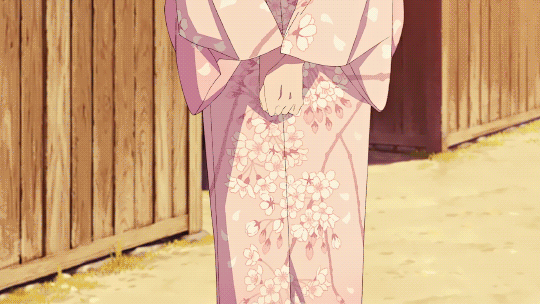
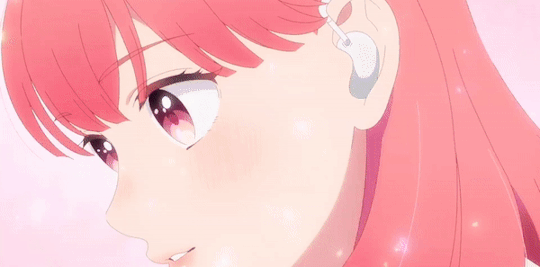
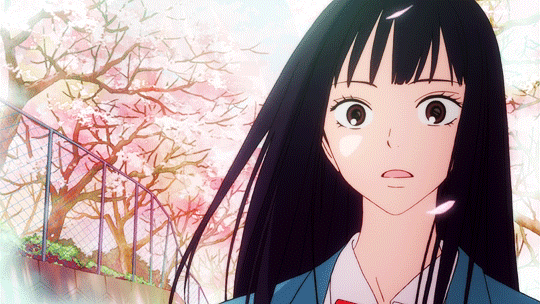
To get back to the point, I don't think it's strange for you to dislike characters that are similar to you. There are a lot of sayings about having an aversion to people similar to oneself—so extending this reasoning to include characters isn't odd. To a degree, I've felt like that at times though over time I've come to appreciate many of those characters as I've gradually come to accept those parts of myself. While most of these characters aren't MCs here are some characters I didn't like at first because they reminded me of certain aspects of myself: Yuki Sohma, Lan Wangji, Yin Yu and Nene Yashiro.
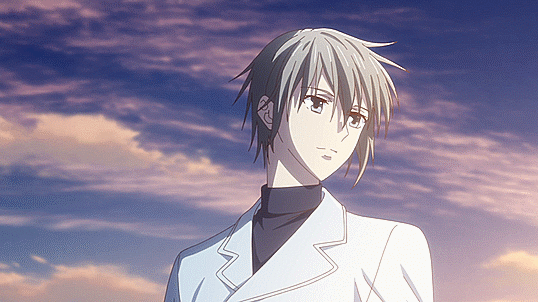


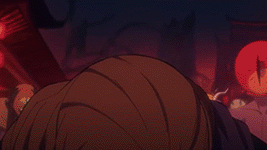
As for characters that I still find it difficult to like because they remind me of certain aspects of myself—or more so of the person I used to be or could easily have become—I can only think of Jiang Cheng, Soo-won and Sasuke Uchiha.
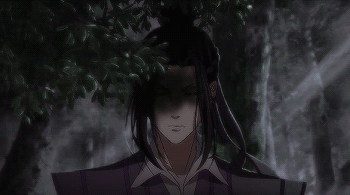
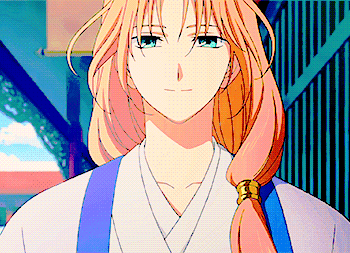
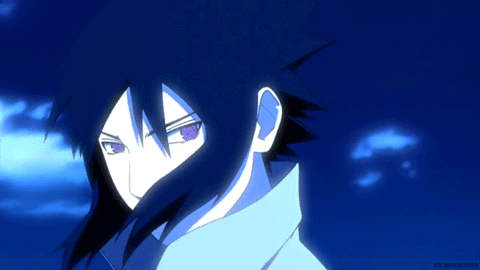
⸺⸺⸺⸺⸺⸺
→ 3 Characters that describe me best:
This is tough because I don't have a good grasp on my personality as strange as that sounds... I recently did a MBTI test as a part of a job application and 3 out 4 of my attributes were all in the 50% range which I interpret as me being very much on the boundary... But I nonetheless used that as a guideline to help me choose... If I had to pick three, I'd go with Shoto Todoroki, Rukia Kuchiki and Shinobu Kocho.



⸺⸺⸺⸺⸺⸺
→ 3 Characters I'd want to be friends with:
Strangely I've actually never thought about this... It's tough to answer since I think most of my favourite characters wouldn't be able to stand me haha... Rather than picking who would be the most fun to hang out with, I choose based on who I thought I could actually get along with best. I feel the characters I picked treasure their friends/loved ones and are sincere, reliable and amicable. I also picked based on who I shared common interests with. So, I'm going to go with: Tohru Honda, Shirayuki and Yoshikazu Miyano. My honorable mentions would be Jiang Yanli and Gintoki Sakata.



⸺⸺⸺⸺⸺⸺
Thanks for the recommendations, I really appreciate it. I'll definitely add the ones I haven't seen to my watch list. I've been dealing with quite a bit lately, so I haven't been watching a lot of new series lately. It's easier to keep up with new releases so I've been managing on that front... With the already-released series, I have to be a bit careful since if I let myself, I'll end up spending all day bingeing episodes and won't get anything else done lmao. I don't know if this is just a me thing but I don't want to mass consume media and want to properly appreciate and immerse myself in it.
Blue Lock: I've actually seen the entire series and went to go see the movie at the cinema when it came out. Blue Lock is probably my third favourite sports anime.
I haven't watched Medalist but since it's airing currently, I've been seeing some edits of it, so I've been considering checking it out.
Someone recommended Idolish7 a few weeks ago so it's been added to my watch list.
Laughing under the Clouds and Kyo Kara Maoh have been on my watch list for a little bit as well... I should really start working through my watch list...
I haven't heard of Jeweler Richard, Servamp or Hakkenden but I'll look into them.
══════════════════
P.S. Frost or Frostfire are both okay with me. Oddly enough I've never had anyone on here refer to me with anything other than basic pronouns unless they were tagging me. On Wattpad where I have a different username people do but not here lol. But anyway thanks for sending in this ask. I hope you have a great day!
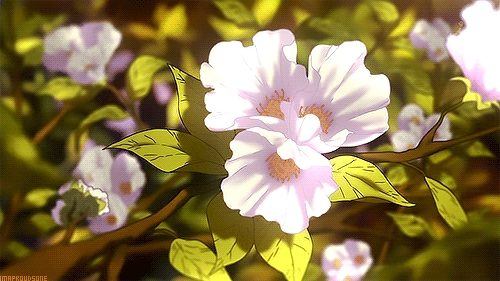
#frostfire-asks#try not to ramble challenge failed once again haha#anime#animanga#tgcf#mxtx#shoujo anime#shojosei#mdzs#hanakotoba#floriography#flower symbolism#anime flowers#todoroki shoto#shoto todoroki#bnha#rukia kuchiki#kuchiki rukia#bleach#tohru honda#honda tohru#fruits basket#fruits basket 2019#akagami no shirayukihime#shirayuki#miyano yoshikazu#sasaki and miyano#sasaki to miyano#tbhk#akatsuki no yona
5 notes
·
View notes
Text
Now that I've finished posting my mdzs hanakotoba analysis, I'm bored...So if you have any requests/suggestions, please send them my way!


If there are any flowers used in a scene or theme song that I have not yet covered, I will gladly do it if I have seen the show. Aside from that, if you have any other anime-related questions or topics you'd like me to cover that aren't flower-related, I'll gladly do it since I'm idle and feel up to researching and creating posts.
If there are a few suggestions then I'll post a poll to decide what to do... Btw here's the link to a directory of my previous anime hanakotoba posts


#frostfire asks#frostfire rants#anime rambles#anime#hanakotoba analysis#anime hanakotoba#manga#donghua#danmei#anime and manga#hanakotoba#flower meanings#animanga#bnha#attack on titan#demon slayer#mxtx#tgcf#mdzs#gintama#link click#fruits basket#shoujo anime#bleach#jujutsu kaisen#jjk#kimestu no yaiba#anime openings#anime endings#anime analysis
8 notes
·
View notes
Note
"Most of the ships in this post are great (love them too)! Sadly OP have to add the gay ships. Really, can't we just have normal ones without gayness".
This is how I found your post (top 30 ships). Sorry, I dislike the one who said the above, but because of them, I found your blog and fall in love with your posts....
Thanks for your posts and your metas (especially the hanakotoba analysis).
See, as multishipper, most that I found are either gay & lesbian ships only or het ships (like the one who said the above) only, but you really saw the dynamics a d chemistries of the characters. That is why I love your top 30 ships post.
Like, at first I thought you'll ship IzuOcha (like most people who love het ship) in BNHA but you ship BakuDeku (amazing) or IchiOri (bland) in Bleach but you ship IchiRuki (great) which both (later) ships have the best dynamics in the series (more than the former ships)..!
Sorry, I'm not really a fan of most m/f ships (it's easier for me to love m/m & f/f compared to m/f) but the ones that you love are all great!
My top 10 favorite ships from your post :
♡ Hua Cheng/ Xie Lian (best love story ever, one of my all time fav danmei ever)
♡ Lan Wangji/Wei Wuxian (Wei Wuxian will always be in my top 10 characters ever, love him so much)
♡ Hak/Yona (best shoujo ever for me, will always love this couple)
♡ Bakugou/ Midoriya (will always be in my top 10 otps ever, love them so much, have shipping them since 2019)
♡ Cheng Xiaoshi/ Lu Guang (start shipping them since ep 1 s1, my love for them got deeper after finished s2)
♡ Obi/ Shirayuki (can't believe you have both ships with Shirayuki, but I love Obi more, for me, Zen is kinda bland)
♡ Taichi/Chihaya (yes, they're canon. I'm so happy when I read the end of the manga, Taichi will always be special)
♡ Minato/Kushina (one of the best ship in Naruto, love the build up and the tragedy, this is my 2nd fav ship after NaruSasu)
♡ Ichigo/ Rukia (why Bleach have to end like that, IchiRuki have way more chemistry than the IchiOri)
♡ Itadori/Fushiguro (love their bond so much)
Have you watch these 4 new fav anime of mine (for the story and the ships): Cherry Magic, I'm in love with Villainess, Yakuza Fiancee, and Nina Starry Bride?
Sorry for this long ask, feel free to ignore them, hope you have a wonderful day.
I'm sorry you discovered my blog due to such a distasteful comment, but I'm glad to have encountered someone with such great tastes in ships. I rarely manage to encounter someone who likes so many ships that I do. Oddly enough, I haven't managed to find that specific comment, so it's likely that person blocked or subsequently deleted their comment without giving me the chance to respond... Oh well...It's not the first time I've gotten criticised for my tastes in ships, and unfortunately, it definitely won't be the last...
Moving on, I'm glad you enjoyed the Hanakotoba metas! They're my favourite types of posts to make, even though they're the most time-consuming. Unfortunately, I probably won't be making another one for a while since I haven't encountered any material to work with in the shows I've seen recently. Here's to hoping The Apothecary Diaries S2 gives me something to work with... But if anyone has any suggestions, I'm keen.
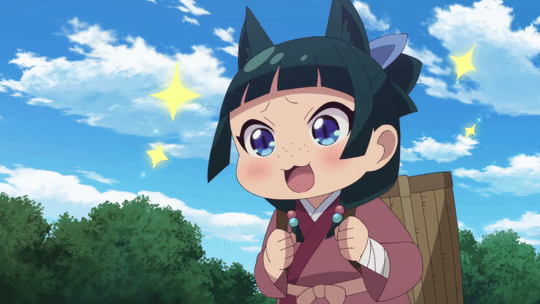
Most people are very rigid about their tastes in ships. Admittedly, I used to be, too, but over time, I've become more open-minded and contemplative—though I still have a long way to go. When it comes to shipping, I prioritise development, character dynamics, and aesthetics in that order. Gender and official status (i.e., canon or non-canon) are unimportant to me.
This is honestly the first time I've seen someone else who ships IchiRuki and BakuDeku... Honestly, I'm so happy! IchiOri/IchiHime is literally the bane of my existence. I could write a full-length essay on what I ship IchiRuki and dislike IchiOri/IchiHime. These days it's especially difficult being an IchiRuki shipper, as we receive nasty comments on most Ichigo/Rukia-centric posts and edits. Just because another ship was made canon doesn't mean you're not allowed to ship anything else. The great thing about fandom spaces is that there is a place for everyone—so I don't know why they can't let us be.
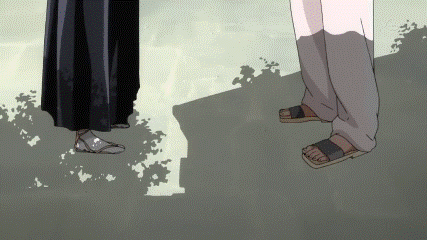
As for IzuOcha, it just lacks the development and depth that BakuDeku and a lot of other BNHA ships have, and consequently, it seems bland in comparison. BakuDeku was actually the very first M/M ship I supported—so I have a lot of attachment to them—and it becoming such a beloved ship has made me immensely grateful and happy. Inexorably, the brighter light shines, the more shadows it casts... As its popularity has increased, the ship garnered more detractors, making things more difficult recently. Seeing people condemn and degrade BakuDeku shippers because of recent events is incredibly hurtful.
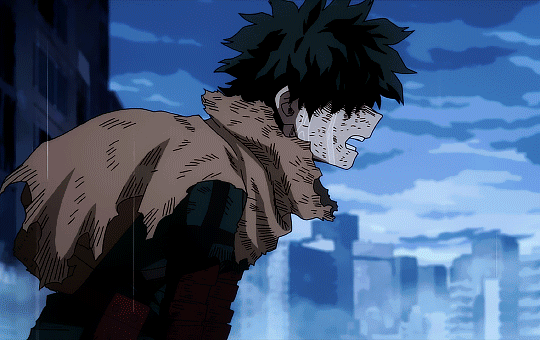
The double standards I've seen from some of the people who disapprove of non-canon ships like BakuDeku and IchiRuki are insane. These same people who disapprove of the age gap between IchiRuki will happily use Isshin/Masaki's dynamic to bolster IchiOri or will go on to ship other couples with age gaps like Inuyasha/Kagome. These same people who use Bakugo and Deku's or Ichigo and Rukia's friendship as a reason not to ship them then go on and fawn over the friends-to-lovers trope elsewhere. Perhaps I've ranted a little too much... However, I didn't intend to insult anyone; I was merely trying to point out things that didn't add up. If anybody here doesn't ship BakuDeku or IchiRuki but is respectful towards their shippers (i.e., refrains from antagonising them unjustly) and can recognise the basis for both ships, please know that my irritation isn't directed at you.
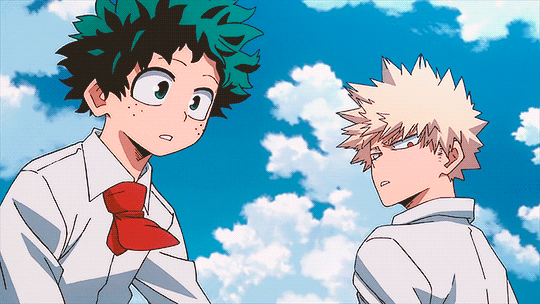
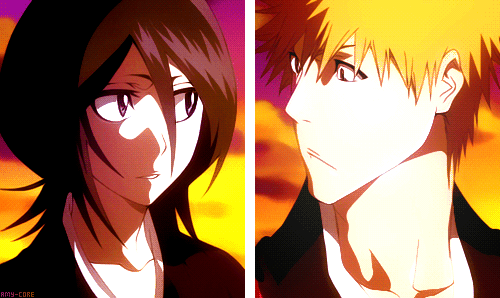
I probably mentioned this already, but you have great tastes in ships. Just a few things I wanted to note as I went through your list and comments... ❉ You're right Hualian truly has the greatest love story ever!
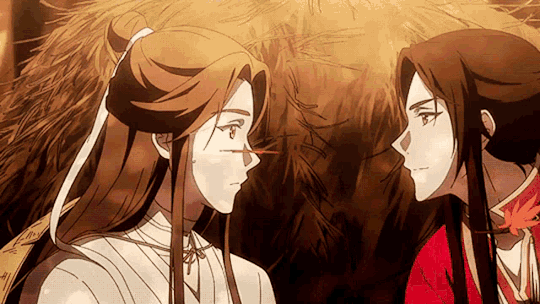
❉ Wei Wuxian is in my top 10 favourite characters too! Each member of the MXTX protagonist trio is so well written tbh.
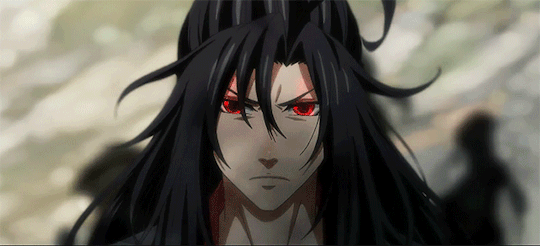
❉ Akatsuki no Yona is my favourite shoujo manga. I'd love them to animate the rest of it. I'd ascend if we got a Fruits Basket-like remake!
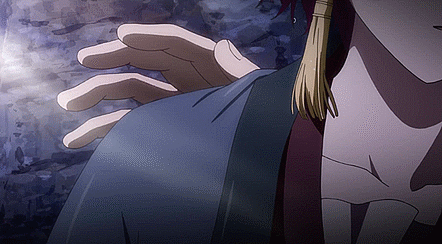
❉ Coincidentally, I also started shipping BakuDeku in 2019, which is when I started BNHA.
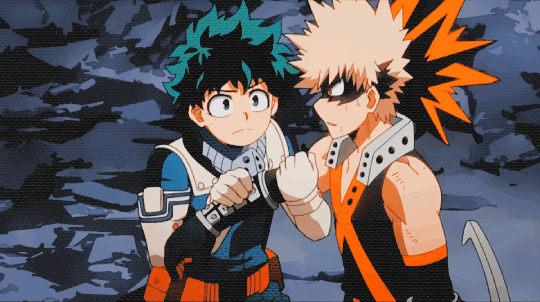
❉ As for the ObiYuki vs. ZenYuki debacle... My heart is torn in two, which is why I haven't read the manga yet. I started the show and shipped ZenYuki, but over time I started drifting towards Obi instead. ZenYuki is a solid ship, but ObiYuki really packs in all of my favourite tropes. So, I ultimately included both ships, knowing that both sides of the fandom might not be pleased with me. I've never been an OT3 person, but I feel like that might be the direction I'm heading towards...
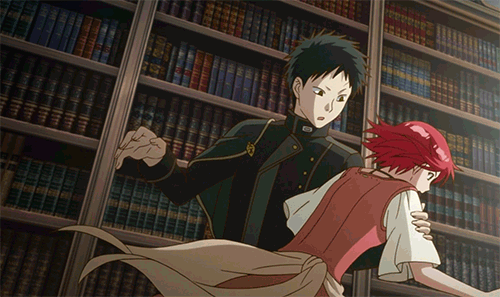
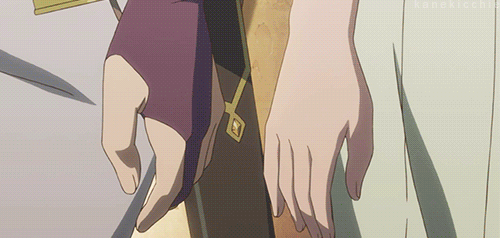
❉ Regarding Taichi/Chihaya I actually have a funny story concerning them... As I was bingeing S3, I saw some spoilers, which led me to believe they weren't canon, which upset me so much that I refused to finish the anime—whereas, before this, I'd been planning to start the manga immediately. After a few months, I realised I'd been misguided, and they were in fact canon! I subsequently finished the anime but haven't gotten around to the manga yet.
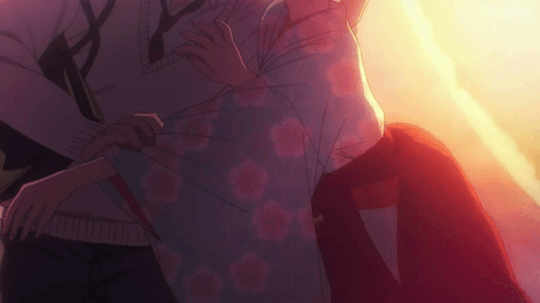
❉ I'm never going to get over the ending of Bleach. Before the TYBW arc, all the development and symbolism pointed towards IchiRuki becoming the endgame... The switch-up was insane!
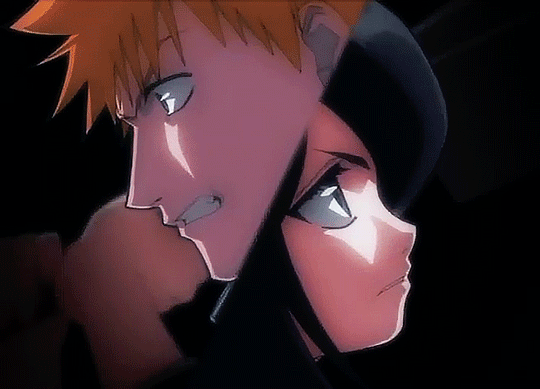
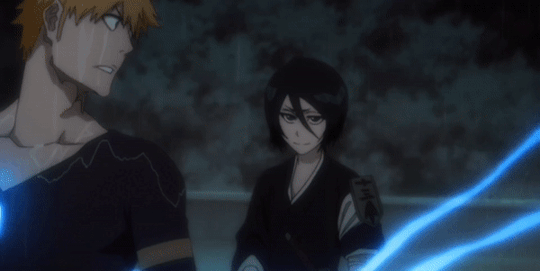
I've been trying out a lot of new anime recently. I actually only started watching new anime seasonally from the first episode a year ago, so keeping up with 12 anime this season has been challenging. ❉ I'm currently watching Nina: The Starry Bride as it airs. Since I heard good things about it from manga readers and had been itching for a fantasy shoujo anime for a while now, I checked it out as soon as the first episode dropped. It's definitely been a journey, and I'm still formulating my thoughts about it... In all honesty, the first episode was lowkey disappointing—but I think that's because my expectations were too high. I feel like it lacked the drama and intrigue that Akatsuki no Yona's first episode had—which was what people had compared it to. However, 8 episodes deep, and I'm really enticed! I really look forward to it every week and am excited to see where the story goes! Are you rooting for Azure or Sett?
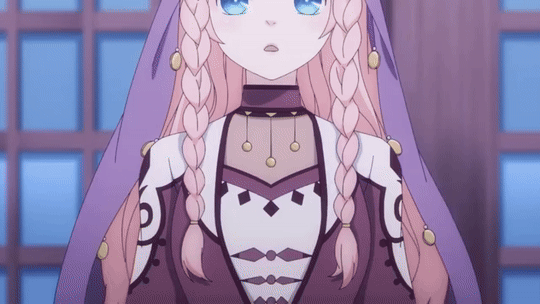
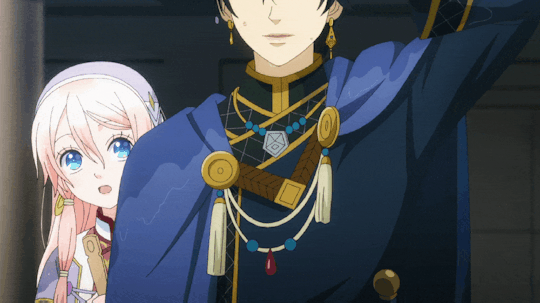
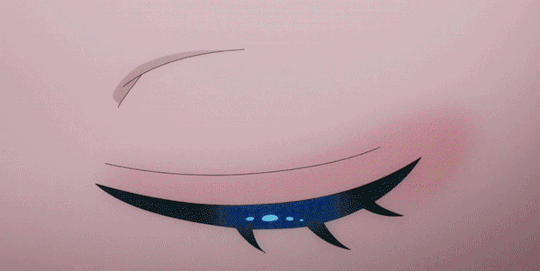
❉ I'm also currently watching Yakuza Fiancee. The show really shook me to my core. Like damn, these people are crazy! It's really entertaining though, and for once I have no idea where the story is headed since the show is so unpredictable to me. However, I'm not sure I can commit to shipping Yoshino with Kirishima yet. I kind of want her to stick to her plan of up and leaving in a year... But we'll see...
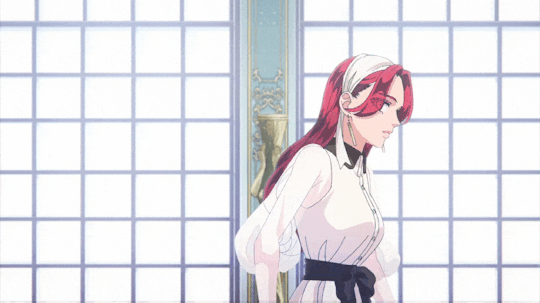
❉ I watched Cherry Magic as it aired as well. It was pretty funny and sweet—but sadly, for some reason, I didn't really form a solid attachment to any of the characters... It's possibly because at the time other shows gripped me more, but I can't say for certain. I might revisit it again sometime when I'm under less stress. ❉ Lastly, I haven't seen I'm in Love With The Villainess...
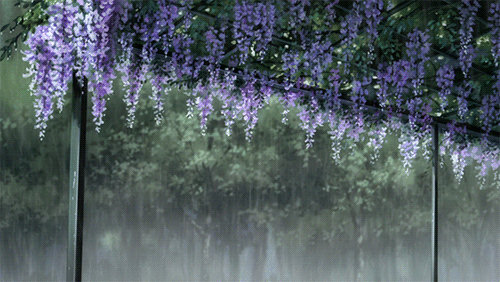
I tried to cover everything. Sorry if I rambled too much... Hopefully I didn't miss anything important...
#frostfire-asks#myasks#anime#anime rambles#anime ships#animanga#manga#donghua#ichiruki#bakudeku#bkdk#ichigo x rukia#bnha#mha#bleach#bleach anime#tgcf#mdzs#mxtx#hoshifuru oukoku no nina#nina the starry bride#yakuza fiance#raise wa tanin ga ii#obiyuki#zenyuki#akagami no shirayukihime#obi x shirayuki#taichi x chihaya#chihayafuru#snow white with the red hair
11 notes
·
View notes
Text
◤─•~❉᯽❉~•─◥ Anime Hanakotoba Posts Directory

╰┈➤ 1.0 Gintama OP15
╰┈➤ 2.1 Fruits Basket ED4 P1
╰┈➤ 2.2 Fruits Basket ED4 P2
╰┈➤ 3.0 Boku no Hero Academia ED10
╰┈➤ 4.0 Chihayafuru ED3
╰┈➤ 5.1 Shiguang Dailiren/Link Click Official Art
╰┈➤ 5.2 Shiguang Dailiren/Link Click - Lu Guang Omake
╰┈➤ 5.3 Shiguang Dailiren/Link Click Season 2 Key Visual
╰┈➤ 6.0 Shingeki no Kyojin/Attack on Titan ED7
╰┈➤ 7.1 Bleach P1: OP16 & ED31 ~ Ichigo Kurosaki
╰┈➤ 7.2 Bleach P2: ED31
╰┈➤ 7.3 Bleach P3: OP16 & ED31 ~ Gotei 13
╰┈➤ 8.1 Tiān Guān Cì Fú/Heaven Official's Blessing P1
╰┈➤ 8.2 Tiān Guān Cì Fú/Heaven Official's Blessing P2
╰┈➤ 9.0 Jujutsu Kaisen
╰┈➤ 10.0 Shingeki no Kyojin/Attack on Titan Final ED - Itterasshai
╰┈➤ 11.1 Mo Dao Zu Shi/Grandmaster of Demonic Cultivation P1
╰┈➤ 11.2 Mo Dao Zu Shi/Grandmaster of Demonic Cultivation P2
╰┈➤ 12.1 Kusuriya no Hitorigoto P1 A: OP1 Hana Ni Natte
╰┈➤ 12.2 Kusuriya no Hitorigoto P1 B: OP1 Hana Ni Natte
╰┈➤ 12.3 Kusuriya no Hitorigoto P2: OP2 Ambivalent
╰┈➤ 13.0 Sousou no Frieren
╰┈➤ 14.0 MXTX (SVSSS, MDZS & TGCF) Fanart by huaihua610715
╰┈➤ 15.0 Jibaku Shounen Hanako-kun
◣─•~❉᯽❉~•─◢
P.S: If you liked any of these posts and there's a particular anime scene, anime opening or anime ending—with some flower symbolism in it—that you want me to make a post about, send me an ask and I'll gladly do it if I've seen the show...

#anime#hanakotoba#anime hanakotoba#flower symbolism#floriography#gintama#gintama op15#fruits basket#fruits basket 2019#boku no hero academia#bnha#mha#my hero academia#chihayafuru#chihayafuru anime#shiguang dailiren#link click#snk#aot#attack on titan#shingeki no kyojin#bleach#tgcf#heaven official's blessing#jjk#jujutsu kaisen#the apothecary diaries#mxtx#mdzs#sousou no frieren
47 notes
·
View notes
Text
Linguagem das flores
read it on the AO3 at https://ift.tt/u0zo7le
by HimeHana
Hanakotoba (花言葉) é uma tradição sobre a linguagem das flores, cada flor tem um significado. A rosa vermelha significa romance, a flor escolhida por Ichigo para presentear Rukia.
Words: 201, Chapters: 1/1, Language: Português brasileiro
Series: Part 4 of Ichiruki month 2021
Fandoms: Bleach (Anime & Manga)
Rating: General Audiences
Warnings: Creator Chose Not To Use Archive Warnings
Categories: F/M
Characters: Kuchiki Rukia, Kurosaki Ichigo
Relationships: Kuchiki Rukia/Kurosaki Ichigo
Additional Tags: Ichiruki, IchigoxRukia, Deathberry - Freeform
read it on the AO3 at https://ift.tt/u0zo7le
1 note
·
View note
Note
I loooooooooove the squad flower symbolism and have a couple of small additions to this excellent post:
I also often wondered where the "official" terms came from because many of them don't actually line up terribly well with hanakotoba. I spent an afternoon dredging the shoals of the internet, and the only remotely interesting thing I found was this August 2014 Weekly Shonen Jump cover:

The glowing blue text apparently reads "The Gotei 13 are blessed by their squad emblem." I don't know if it had more information on that inside-- it spurred a forum discussion here, but it reads to me like people are pulling their information from some prior source.
Anyway, like yesterday I noticed that the squad flowers meanings are printed in Color Bleach+, a book I have read about 900 times, it's just that they are just written sideways, in a tiny font. They aren't exactly the ones on the Bleach wiki, but it's close enough that maybe it's just a different translation. The first poster in that forum discussion uses the same definitions as the Bleach wiki, but I don't know how old the Bleach wiki is, so that could be a chicken-egg situation.

At least two of these flowers are strongly associated with death in other cultures. Marigolds are an important part of Dia de los Muertos, and said to guide spirits to the Land of the Dead. In Greek myth, Persephone was said to be picking daffodils when she was abducted by Hades, and they grow along the River Styx.
"Lily of the valley" is a slightly misleading translation for Squad 5. Pieris japonica is sometimes called the lily of the valley shrub, but the lily of the valley is an entirely different plant. It's a flower, not a shrub.
Camellias are also symbolic of love in hanakotoba, with white meaning longing, yellow meaning waiting, and red meaning romantic love. In addition to the noble reason/samurai stuff, Byakuya and Renji are characters whose arcs are driven by lost love, Kubo uses red and white symbolism for those two all the time, and Renji has the character for "romantic love" in his name, so I think that had to be at least part of the motivation in that choice.
You've got the flowers for 7 and 8 swapped above: 7 should be iris and 8 is bird of paradise, which is almost a shame, because I love the way you connected "flamboyance" with Iba's performative devotion. It sits pretty naturally on Kyouraku, though.
The "official" meaning for Daffodil is "egotism and mystery." I once spent a lot of time trying to track down any possible connection between "mystery" and daffodils in hanakotoba or otherwise and came up empty. (Egotism is easy: Daffodils are also called Narcissus-> Greek myth Narcissus, namesake of narcissism. Greeks sure liked daffodils, I guess) Anyway, if Squad 10 is, like, the detective bureau of the Gotei-13, that would explain...maybe something...about Hitsugaya and Matsumoto trying to solve Aizen's murder in the Soul Society arc.
I think that Rukia should also be considered in the choice of the snowdrop for Squad 13-- after all, she is the deuteragonist of the series. The snowdrop/Sode no Shirayuki symbolism is almost too obvious, but I think it's more about the hope connection. Soul Society is portrayed as universally stagnant and awful, except that we are able to see Rukia change and grow and look forward as the series progresses. In particular, I am thinking of the end of the Fullbringer arc, where all the captains show up to grimly observe whether or not Ichigo will turn on them, but Rukia's hope and belief in him is unwavering. Also, one of the reasons that snowdrops represent hope is because they are one of the first flowers to come up out of the snow in early, early spring, which I think is also sort of symbolic of Rukia, who has been existing in a state of depression and smallness prior to the events of canon, and who suddenly blooms into herself, culminating in her own captaincy.
IM just curious, can you talk about gotei 13 and zero divisions'flower symbolism in BLEACH ?
I don't know that there's much to add outside of canon. I think Kubo mentions in various supplemental materials what his reasoning was, and I believe they all line up with pretty standard Japanese floriography, i.e. hanakotoba[花言葉] lit. "flower language."
I was cross referencing things with the Bleach wiki and I realize that I have no idea where Kubo actually confirmed his preferred/intended readings for there, and the wiki doesn't have any citations on it (because of course they don't) so I'm just going to list everything I found on hanakotoba.com and point out anything that feels appropriate...

Kiku[菊]: Chrysanthemum(Chrysanthemum morifolium)
Noble/Virtuous/Lofty
Truth (White chrysanthemum specifically)
It is also more broadly associated with Longevity, Rejuvenation, and Royalty as it is the crest of the royal family of Japan. Its use with 1st division is mostly likely just evoking a seat of authority rather than flower language.
Okina-gusa[翁草]: Nodding Anemone(Anemone cernua)
Unspoken love
Ask for Nothing
Treacherous Love(a love that betrays you)
Really just laser focusing in on Sui Feng specifically here. Aptly reflects her whole thing with Yoruichi, although I don't remember offhand when the first time we actually see 2nd division's flower insignia specifically. I do know we don't even really see Omaeda properly until right before the execution (and the lt. badges are the only place we see the flowers) so it could also have been assigned after their big fight and hsitory/relationship reveal.

Kinsen-ka[金盞花]: Marigold(Calendula officinalis)
Desolation/Loneliness
The Grief of Separation
Mourning
Loss of Hope/Despair
This one at least came up in the actual manga when Kira fought Abirama. But it does seem like another character specific and relationship based one at its inception. Reflects Gin's whole self isolation from Rangiku in his pursuit of revenge, as well as Kira's abandonment in the process.
Rindou[竜胆]: Autumn Bellflower(Gentiana scabra)
To Love the Grieving
Faithfulness/Fidelity
Sincerity/Good Faith
Justice
Reliability
I assume the face value reading here is meant to focus on the "Reliability" part as the medical team. That or maybe "Love the grieving" as a reference to a sort of doctor/nurse's bedside manor. The "Faithfulness & Fidelity" reading does suit Isane's quiet devotion to Unohana though.

Ase-bi[馬酔木]: Lily-of-the-Valley(Pieris japonica)
Sacrifice/Scapegoat/Victim
Dedication/Devotion
Self-sacrifice
Another rather personal jab. A clear indicator of Hinamori's fate. "Dedication" and "Devotion" on the surface might still suit the division, but ultimately Hinamori being a "victim" and "sacrifice" of Aizen's ambition very starkly foreshadowed in this.
Tsubaki[椿]: Camellia(Camellia japonica)
Pride/Honor
Modest Splendor/Modest Virtue
Unwavering Elegance
The red tsubaki is also kind of a classically samurai associated flower on its own, hanakotoba not withstanding. When the camellia dies the flowers drop off their stems without wilting and it's seen as a kind of metaphor for samurai ethics; Better to die quickly and with your good image intact than suffer the indignity of a prolonged wilting.
This I assume is a kind of adjacent meaning to "Pride/Honor" and "Unwavering elegance." And certainly that kind of fixation on the appearance of honor and dignity suites Byakuya's slavish devotion to law and propriety even at the cost of his wife's dying wishes, and indeed any pretense of familial obligation to Rukia as his adopted sister.

Gokurakuchou-ka[極楽鳥花]: Bird-of-paradise(Strelitzia reginae)
pretentious love
to love a man concerned with his appearance
It took me a moment to really parse this. Most elaborations I found just danced around terms for a "fop" or a "dandy" in describing what I eventually boiled down to just "a man concerned with his appearance" so the particular tone of vanity was misleading. But I think the joke is just that Komamura hiding his wolf head under a series of masks and helmets does indeed count as "concern with appearance" just not in the otherwise implied flamboyant way.
Also the term "pretentious love" sort of fits with Tetsuzaemon's overwrought yakuza-like loyalty and deference to Komamura as his boss. It's not a simple modest devotion it's overplayed and loud and draped in pomp and ritual. He isn't just devoted in action, he has to give the express appearance of devotion as well.
Ayame[菖蒲]: Siberian iris(Iris sanguinea)
good news
hope/desire/ambition/expectations
I dunno this feels weirdly absent of real relation to Kyoraku or even Nanao. I will come back to that "Hope/Desire..." one though. So stick a pin in that...

Shiro Keshi[白罌粟]: White Poppyseed(Papaver somniferum)
thoughtfulness/consideration/compassion
pity/sympathy/understanding
death/sleep/forget/oblivion
I don't really know what to make of this... The specificity of White Poppy means the reading really should be "Death" or "Sleep" and I guess that kinda ties into Tousen losing his friend. But that feels like a stupidly loose connection. On the other hand the more general meaning of the poppy as "compassion/pity/sympathy" seems to match more of Tousen's actual relationships with his dead friend, with Komamura, and even to a lesser degree with Hisagi.
To "forget" or be lost in "oblivion" however feels like a very knowing and ominous point in the direction of Tousen having lost his way and forgotten himself in his quest for justice.
Suisen[水仙]: Daffodil(Narcissus tazetta)
esteem/respect/reverence
unrequited love
Another rather personal one. The general tone of Respect and Reverence and High Esteem could maybe refer to Hitsugaya's need to be taken seriously despite his age and stature, but that feels like loose and far too general fit at best. His unrequited love for Hinamori however suits this far better.

Nokogiri-sou[鋸草]: Siberian yarrow(Achillea sibirica)
to fight/to struggle
bravery/courage, but also healing/a cure/recovery
Obviously the "Fight" bit is super literal. Honestly that may be all there is to it though.
Azami[薊]: Japanese Thistle(Cirsium japonicum)
indepencence/separation
retaliation/revenge
strict/strern
not to be touched
I'm not actually so sure about this. The general theme of "sternness/strictness/discipline" I guess kind of fits? But I think the general kind of natural warning sign of "Do Not Touch" is really the best fit for both Mayuri and the department as a whole, although it feels oddly informal as a reading compared to the rest.

Matsuyuki-sou[待雪草]: Snowdrop(Galanthus nivalis)
relief/ease/comfort/solace
hope/desire/ambition/expectations
So the "Relief/Solace/etc..." bit certainly seems to fit Ukitake's demeanor as his terminal illness does indeed require him to frequently take an aside to lie down. But I was surprised to find that the "Hope/Desire/etc..." reading appeared here as well as with the Ayame, and I don't think it's coincidence that Kyoraku and Ukitake have matching themed flowers for their divisions.
Incidentally this also ties into Kaien as lt. since the Shiba name echos this same meaning of "Ambition".
Jinchou-ge[沈丁花]: Winter Daphne(Daphne odora)
Glory/Honor
Immortal/Indestructible/Eternal/Timeless
This one seems pretty obvious. "Glory" and "Indestructible" describe their reputation well enough, although they turned out to be far from indestructible, unfortunately.
It always kind of confused me that Kubo put their flower insignia inside the Gotei diamond, not only because they aren't supposed to be part of the gotei, but because it just seemed to break so many other design patterns... but then I realized that the only parts of the shinigami uniforms where the flowers are ever visible are on lt. badges(limiter stamps and the little sewn in tags being hidden) and there weren't any lieutenants in the royal guard.
Feels like a halfbaked idea to slap them on the coats just to make sure they show up somewhere, but then so was most of their introduction and role in the plot.
#squad flowers#i really need to learn more flower facts for squads that i don't have blorbos in#if anyone has the shonen jump i would love to know if there is more info inside
185 notes
·
View notes